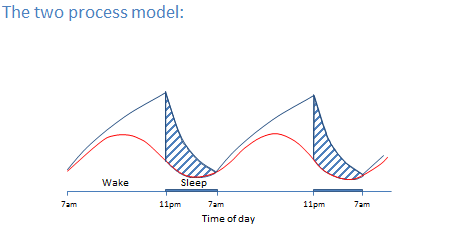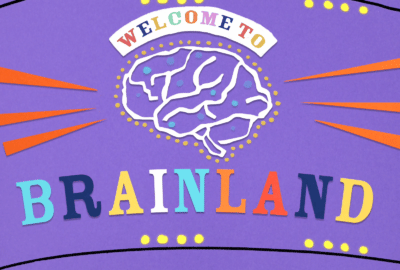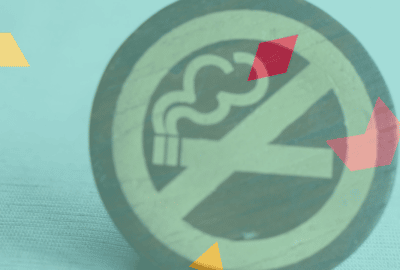What makes you tick?
Monday 9th Nov 2015, 3.09pm
How do you know when it’s time to wake up or go to sleep? More powerful than any alarm are your circadian rhythms. In this animation we take a look at how these rhythms work and what controls them; inspired by the TeenSleep project being carried out at the University to look at how later start times at school might affect achievement.
What are circadian rhythms?
The word ‘circadian’ comes from the Latin ‘circa’ meaning ‘around’ and ‘diēs’, meaning ‘day’. Our circadian rhythms are biological processes that follow a (roughly) 24-hour cycle. Throughout the day our alertness levels will wax and wane, as will our temperature, blood-pressure, appetite and hormone production. These fluctuations are examples of circadian processes. The most obvious circadian process is the sleep-wake cycle.

These rhythms exist in humans, animals, plants and microbes, and have been preserved across species and throughout evolution. They are endogenous. This means that these rhythms are internally generated; if we are kept in constant conditions they will continue to operate within a 24-hour cycle. However, they can be influenced by external or exogenous, factors. The most effective way to alter your circadian rhythms is by altering your light exposure. It is through light exposure that the internal body clocks keep in tune with the external, 24 hour, world but how does this happen?
How does our body know when it’s time to sleep?
Humans detect light through the eye. Light enters the eye and is focused onto the retina at the back of eye. The retina contains photoreceptive cells that detect light and send this information to the brain, via the optic nerve. The most obvious outcome of this process is the ability to form images; to see. Image-forming vision depends upon rod and cone photoreceptors, which are critical for low light vision and bright light colour vision, respectively. However, it was discovered in 1999 that the circadian system of animals lacking rods and cones could still respond to light. This led to the discovery of a new class of photoreceptive cells: the photo-sensitive retinal ganglion cells (pRGCs), which express the light sensitive pigment melanopsin. These pigments undergo a chemical reaction when they absorb light, which causes the ganglion nerve cells to fire signals to the brain.

These signals from the melanopsin pRGCs feed directly into the Suprachiasmatic Nuclei (SCN). These are cells in the hypothalamus, near the base of the brain, which contains the master circadian clock (or pacemaker). The SCN orchestrates our circadian processes, to make sure that systems throughout our bodies are working together, in time. This system is also involved in controlling our sleep-wake cycle. As the level of light gradually decreases at the start of the night we produce increasing levels of a hormone called melatonin. Melatonin plays a vital role in our day-night cycles, acting as an internal signal of night time.
Why is being exposed to light at the wrong time so bad?
If we are exposed to light at the wrong time, say because we work night shifts, this confuses our system. Light supresses the production of melatonin, and promotes wakefulness. We delay our sleep and other circadian and sleep-dependent processes. We can work nightshifts for years and our circadian system will not adapt to our new sleep-wake cycle – primarily because we are exposed to natural light during the day, which is far brighter than artificial light sources. This leads to a whole host of problems. Working through the night means we are working when our bodies are craving sleep. To counteract the sleep deprivation our bodies increase the production of hunger hormones, causing us to crave high-energy foods, which can lead to weight gain and obesity. We may also develop insulin resistance, making us more susceptible to diabetes. To make the most of our energy reserves to get us through the night we activate our stress systems. This puts additional pressure on the cardiovascular system, creating a greater risk of heart disease. We may also increase our use of stimulants to counteract the tiredness and sleep deprivation. These not only affect our overall health directly but also indirectly by reducing the quality of sleep following a night shift. These negative consequences are made worse by the fact that when do get to sleep after a night shift, the quality of our sleep will be poor, because we are trying to sleep when our biology is telling us to be awake.
Is it different for teenagers?
The reason we are so interested in sleep during adolescence is because our circadian rhythms change during this period. From the age of 10 until around 21 our circadian rhythms delay. This means that as we go through adolescence and into early adulthood we are naturally more inclined to go to bed later and also to get up later. This is a biological process, and will happen to teenagers regardless of their environment.
Asking an adolescent to get up at 07:00 to start school at 09:00 is akin to asking a 55-year-old to get up at 05:00: this leads adolescence to accumulate a significant amount of sleep deprivation. The circadian drive isn’t optimised for wakefulness and engagement until around 10:00.This means that adolescents are typically starting school at a time when they are feeling the effects of sleep deprivation and when their natural rhythms are not optimised for alertness, and therefore learning. There have been a whole host of studies, mostly from the US showing that a delay in the school start time improves sleep, mood, well-being, alertness and academic outcomes with one study suggesting that a delay in the school start time is more effective than improving the quality of the teaching.

Whilst timing of sleep (and activity) is important, so too is understanding what other factors might affect the quality of your sleep. Not only do adolescents have a natural biological predisposition to staying up later, but the devices they use to communicate and for entertainment may also impact sleep. TV screens, tablets and phones emit light at a level which may interfere with sleep onset, compounding the effects of the naturally occurring circadian delay. A recent study has suggested that teenagers may be particularly susceptible to the effects of light emitting deceives. Students are also dealing with the stress of exams and the pressure to perform well. The TEENSLEEP study aims to address some of these issues by looking at the effect of sleep education and delaying the start time of teaching on sleep quality and academic outcomes.
Contact us to find out more about the following teaching resources:
KS3 – School Day Delay
KS3 – Dark Side of Blue Light
KS4 – Teensleep Study
KS5 – Shifting Problems




